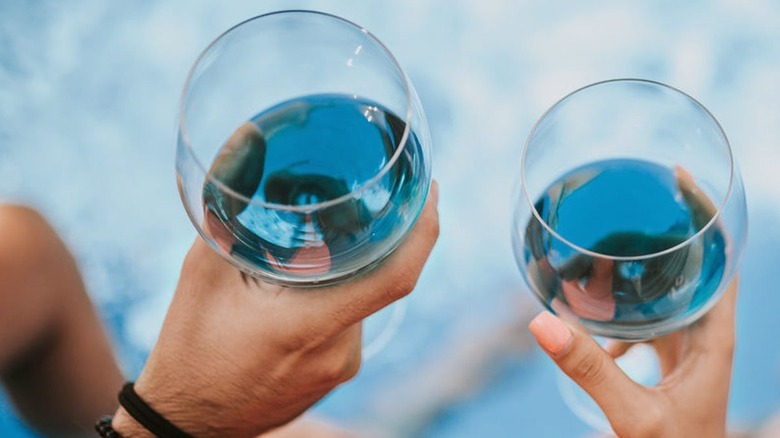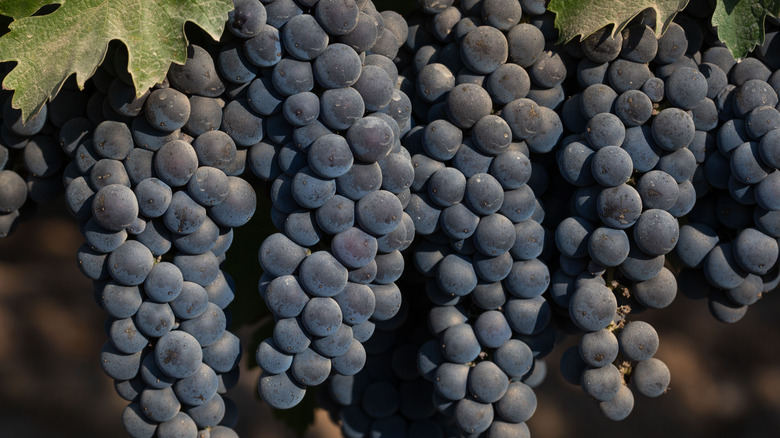What Is Blue Wine, And How Does It Get Its Bold Hue?
Red and white are no longer the only options for wine drinkers. Alcoholic grape juice also comes in shades of pink, orange, green, and — if you're in Europe — blue. If you've never heard of that last one, you're not alone. Blue wine has only been around since 2015, when it was first introduced by the innovation-obsessed entrepreneurs behind the Spanish wine company Gik.
As the opposite of red on the primary color spectrum, blue might seem like an unnatural shade of vino, but rest assured that it has no affiliation with dyed Gatorade and Jolly Ranchers. Gik gets its hue in part from a secret blend of red and white grapes from various regions of Spain, which impart a heavy dose of the naturally occurring grape-skin pigment anthocyanin. A dye derived from the Isatis tinctoria plant is also used to tint the wine and deepen its hue.
Gik isn't the only blue wine on the market today, though the trend is definitely still catching on. But how did blue wine come to be — and, more importantly, how does it taste?
A bumpy start
The initial popularity of Gik wine was short-lived, to say the least. According to Food & Wine, the aqua-hued Spanish wine only lasted on French shelves for a few days after it was discovered that its production process violated European wine-labeling rules. (Plus, wine aficionados weren't wild about the taste.)
Instead of casting it out altogether, French entrepreneur René Le Bail started his own blue wine company, Vindigo, with French tastes in mind. Ironically, French vineyards were too scarred by Gik to work with Le Bail, per the Telegraph, so he took his operations to blue-wine-friendly Spain.
The wine starts out as a chardonnay and, like Gik, gets its hue from anthocyanins. Unlike Gik, however, Vindigo doesn't include added indigo dye. As a result, it's slightly lighter in color than its predecessor — though both bear the likeness of blue raspberry drinks. Indeed, the taste of blue wine is decidedly fruity and sweet.
Some taste blackberries, others taste artificial sweeteners
One Vivino reviewer wrote that Vindigo is "drinkable," but added that they were "not able to finish it." Another reviewer described it as "sweet" and "funny tasting," while another compared it to the purple children's cough syrup Dimetapp. Meanwhile, Le Bail told The Guardian that his "festive" blue wine is characterized by its "fruity taste," with notes of "cherry, passion fruit, and blackberry."
Food & Wine's tasting team described the aroma of Gik as "an otherwise inoffensive sweet white," but they weren't fans of the wine's artificial zero-calorie sweetener. One taster likened it to "those blue Equal packets at a coffee shop," while another thought it tasted like "sugar-free Kool-Aid mixed with a splash of wine." That sentiment was echoed somewhat by tasters from Time, who felt that the "conversation piece" wine would be best paired with soda.
Until someone makes a blue wine that delivers on taste as much as visuals, wine drinkers might continue to think twice before ordering a bottle online. Still, if the novelty appeals, by all means, raise a glass.


